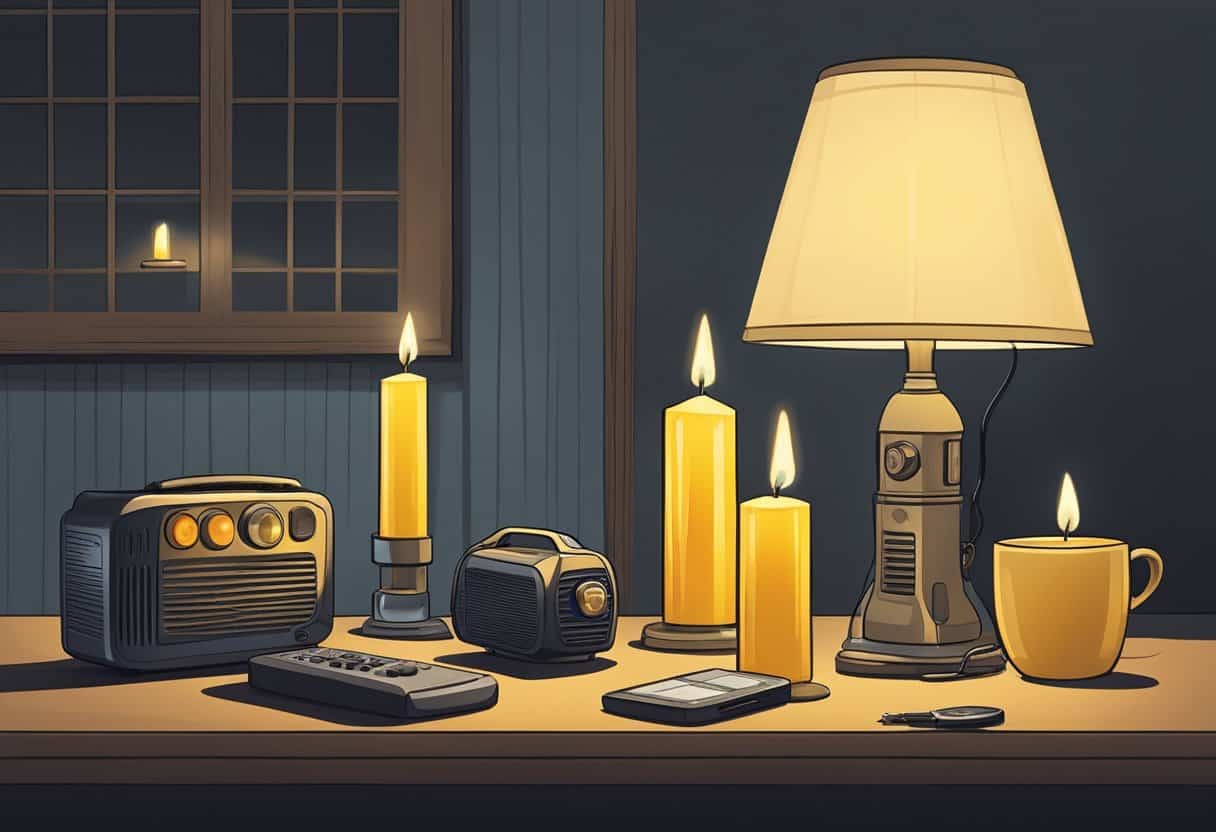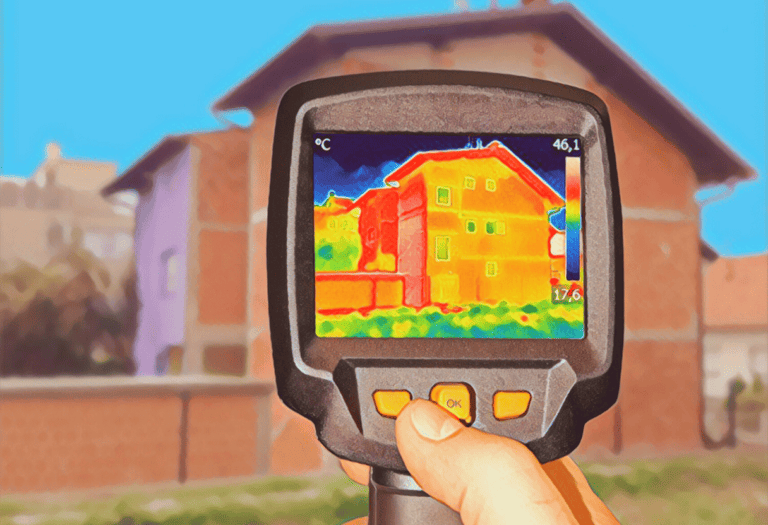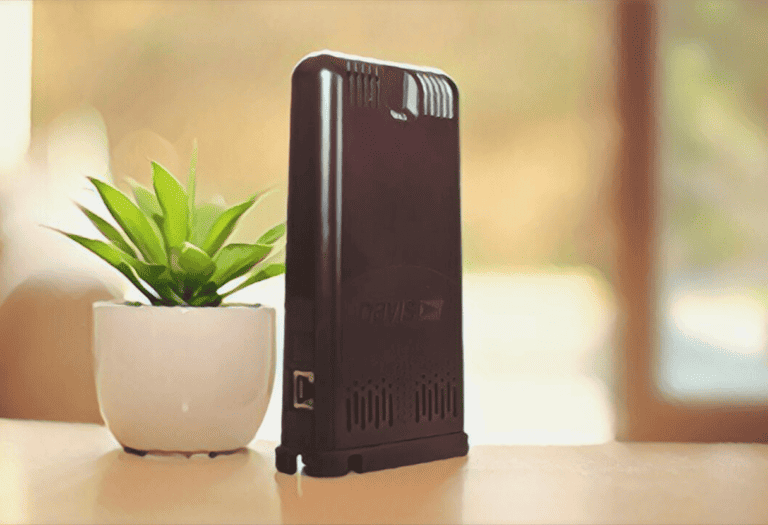Preparing for a power outage involves understanding the common causes of electricity disruptions and anticipating the impact it can have on your daily life.
By recognizing the potential risks, you can develop a proactive plan to maintain safety and comfort during an unexpected loss of power. Whether outages are caused by severe weather, technical failures, or other unforeseen events, having a strategy in place can significantly reduce the inconvenience and dangers associated with such interruptions.
Implementing an effective response plan begins with gathering emergency supplies, including non-perishable food, water, and medical necessities, to withstand the outage. Moreover, considering backup power alternatives, safeguarding appliances, and understanding food and water preservation methods are instrumental steps to enhance your readiness.
Compiling information on safety, the preservation of perishable goods, and preparing your living space can help ensure that you remain equipped for both short-term and extended periods without electricity.
Be ready for power outages with an emergency kit, home sealing, unplugged electronics, news updates, rationed supplies, and safe candle use.
Understanding Power Outages
When you think about a power outage, it’s essential to recognize not only how it can affect your daily life but also the various factors that cause such disruptions. This section delves into the fundamentals of power outages, from their origins to potential risks.
Causes and Types
Causes: Power outages can stem from a multitude of sources. Severe weather such as hurricanes, winter storms, and flooding is often a leading cause, capable of damaging infrastructure or overloading systems. Other causes include equipment failure, human error, and planned outages for maintenance.
Types:
- Transient Faults: Momentary losses of power usually rectified quickly.
- Brownouts: Reductions in voltage, identifiable by dimming lights.
- Blackouts: Complete loss of power, often affecting large areas and for an extended period.
Predicting Outages
Efforts to predict power outages are becoming more sophisticated. Meteorological data helps anticipate weather-related disruptions, especially from hurricanes or severe winter storms. Utility companies use advanced modeling to foresee and mitigate potential outages, reducing downtime and impact.
Risks and Hazards
Consequences of outages vary:
- Health: Power loss can impact hospitals and critical care.
- Safety: Outages may compromise emergency services and home security systems.
- Economic: Prolonged absence of electricity can lead to significant financial loss for businesses.
Being aware of the risks helps you better prepare and respond to these scenarios, ensuring your safety and minimizing inconvenience.
Developing an Outage Plan

To effectively manage power outages, it’s essential to stratify your approach. This includes establishing reliable channels of communication, setting clear safety protocols, and formulating a solid evacuation plan should the need arise.
Communication Strategy
First, ensure you sign up for emergency alerts from trusted services like ready.gov to receive timely updates during a power outage. Maintain a list of important contacts, including local authorities and utility companies, and consider a battery-powered or hand-crank radio as a backup communication method.
Safety Protocols
During outages, prioritize safety by verifying that all smoke and carbon monoxide detectors have battery backups. Compile a list of must-have items, such as flashlights, batteries, and first-aid supplies. If you or a family member has medical needs that require power, create a contingency plan addressing how to manage them during a blackout. Ensure locks and security systems are functional without electricity to maintain home safety.
Evacuation Plan
In the event you must evacuate, have a clear, practiced route. Keep your car’s gas tank filled in case fuel pumps are not working. Store physical maps in case digital navigation tools are unavailable, and designate a meet-up location with your family members in case of separation. Always leave with essential documents and an emergency kit tailored to your personal needs.
Emergency Supplies Checklist
In preparing for a power outage, a well-stocked emergency supplies kit is essential for safety and survival. Here’s a breakdown of the crucial items you should have readily available.
Food and Water
- Food: Keep at least a three-day supply of nonperishable food items that require no cooking, such as canned goods–and don’t forget a manual can opener.
- Water: Store a minimum of one gallon of water per person per day, for at least three days, for drinking and sanitation.
Medical and First Aid
- First Aid Kit: Your kit should include bandages, antiseptics, prescription medications, and pain relievers.
- Health Supplies: Remember to have extra batteries for hearing aids and other essential medical devices.
Tools and Equipment
- Lighting: Ensure you have multiple flashlights and plenty of extra batteries.
- Power: A battery backup can keep critical devices running, and a portable generator can power larger items. Remember to include car chargers for your cell phones.
Power Alternative Arrangements
When preparing for a power outage, it’s critical to have alternative power sources and know how to use them safely. From keeping warm to ensuring food can be prepared, there are numerous considerations to address.
Generators and Safety
Generators can be a lifeline during power outages, supplying electricity to essential appliances. Key points to remember:
- Type: Opt for either portable or standby generators based on your needs.
- Fuel: Ensure you have ample fuel stored safely for the generator’s type — gas, diesel, propane, or battery.
Safety Tips:
- Keep generators outdoors and away from windows to avoid carbon monoxide poisoning.
- Before refueling, always turn off the generator and let it cool.
- Install carbon monoxide detectors in your home; this gas is odorless and colorless but highly poisonous.
Heating and Cooking Alternatives
In the absence of electricity, keeping warm and cooking becomes a challenge. Here’s how you can manage:
- Heaters: Use a propane heater or fireplace, but ensure the area is well-ventilated to prevent carbon monoxide buildup.
- Cooking: Utilize a propane stove or gas stove. Never use outdoor grills, such as a charcoal grill, indoors.
Precautions:
- Place heaters on a hard, non-flammable surface away from any flammable materials.
- When using fireplaces, keep a screen in front of it to prevent sparks from landing on carpet or furniture.
Cooling and Ventilation
Keeping cool without power is especially important in warmer climates. Here are effective strategies:
- Indoor Cooling: Use battery-operated or hand fans. Open windows strategically to create cross-ventilation if it’s cooler outside.
- Outdoor Options: Set up a tent for shade and to capture any cool breezes, but remain hydrated and avoid the hottest part of the day.
Tips for Ventilation:
- Utilize natural ventilation whenever possible to keep air fresh.
- If using indoor fans, place them near windows or doors to pull in cooler air from outside.
Protecting Appliances and Electronics
To safeguard your valuable home appliances and electronics against damage due to power outages and the inevitable fluctuations that follow, it’s critical to adopt preventive measures. By incorporating appropriate devices and systems, you can secure items such as your refrigerator and freezer from harmful electrical surges.
Using Surge Protectors
Surge protectors are your first line of defense against electrical surges that can occur when power is restored. These devices act to absorb the excess voltage, preventing it from reaching your appliances and potentially causing damage. It is essential to choose a surge protector that has:
- A UL rating of 1449, indicating a third-party testing for safety and effectiveness.
- An absorption rating of at least 600 joules, which ensures a significant level of protection.
- Indicator lights, so you know at a glance whether the unit is functioning correctly.
For added safety, plug sensitive electronics into a power strip that includes built-in surge protection.
Power Backup Systems
For extended power outages, battery packs or other power backup systems offer an additional level of safeguarding.
- Uninterruptible Power Supplies (UPS): These systems can keep your devices, such as computers, running temporarily during an outage so you can save your work and shut down properly.
- Generators: For long-term solutions, a standby generator can power essential appliances like your refrigerator and freezer, preserving your food during extended blackout periods.
Remember, whether using surge protectors or backup power, always follow the manufacturer’s instructions to ensure the safety of your devices and your home.
Food and Water Preservation
When a power outage strikes, keeping your food and water safe becomes a top priority. You need strategies that ensure your refrigerated items, like food safety and refrigerated medicine, remain cool, and you’re aware of the non-refrigerated options available to you.
Maintaining Refrigeration
During a power outage, your refrigerator and freezer are the first line of defense to keep perishables safe. Minimize the number of times you open the doors to keep the cold air in. Your refrigerator will keep food cold for about four hours if unopened, while a full freezer will maintain its temperature for approximately 48 hours (24 hours if it’s half full) as long as the door remains closed. Keep a thermometer inside to monitor the temperature; food should be kept at 40°F (4°C) or below. Utilize coolers with ice to enhance refrigeration longevity, especially for essential refrigerated medicine or juice that needs to be kept cool.
Refrigerator Tips:
- Keep the doors closed as much as possible.
- Use a thermometer to check the temperature.
- Prioritize: Move items that spoil quickly to the cooler first.
Freezer Tips:
- Group food together to help it stay cold.
- Consider freezing containers of water beforehand to create more ice blocks.
- An unopened freezer keeps temperature for about 48 hours.
Non-Refrigerated Options
Having nonperishable foods on hand is crucial. These do not require refrigeration and have a long shelf-life. Stock up on items such as canned fruit, cereal, crackers, and granola bars. These foods will remain safe to eat without the need for cooling, making them perfect for the duration of most outages.
- Nonperishable Food List:
- Canned goods (vegetables, fruits, beans, etc.)
- Dry staples (pasta, rice, oats)
- Snack foods (nuts, dried fruits, jerky)
- Beverages (bottled water, juice boxes)
Remember to use food from the refrigerator first, then from the freezer, and finally from your nonperishable supplies. Keep canned foods in a cool, dry place, and once opened, consume within a safe period, transferring any unused portions to a clean container if not eaten immediately.
Safety and Prevention Measures
As you prepare for a power outage, it’s crucial to be aware of the risks that can arise in the absence of regular power supply. Your safety plan should prioritize measures to protect against carbon monoxide poisoning and fire-related hazards.
Carbon Monoxide Awareness
Your use of alternative heating sources could inadvertently expose you to carbon monoxide (CO), a colorless and odorless gas that can be fatal. It’s vital to install carbon monoxide detectors in your home to alert you of dangerous CO levels. These devices should be battery-powered or have a battery backup, and you need to test them regularly to ensure they’re functioning properly. Additionally, never use outdoor fuel-burning devices indoors; this includes charcoal grills, portable camping stoves, and generators, as they all emit carbon monoxide.
Fire Prevention and Management
To prevent fire-related incidents during a power outage, you should store firewood, matches, and lighters away from children and in a safe, dry place to prevent accidental ignition. Have a fire extinguisher accessible, and familiarize yourself with its use. If you need to use candles, keep them away from flammable materials, and never leave them unattended. Consistently cleaning your fireplace and ensuring your chimney is clear before use can also reduce the risk of a fire.
Preparing the Home Environment
When facing a power outage, your home environment is your sanctuary. Ensuring proper insulation and securing necessary utilities and supplies are pivotal for maintaining safety and comfort during such times.
Insulation and Temperature Control
Insulate your home effectively to maintain a comfortable temperature. This can involve sealing gaps around doors and windows with weather stripping or insulated curtains. During colder months, keep blankets and sleeping bags on hand to retain body heat, as standard heating methods may not be operational. Conversely, in warmer periods, natural cooling techniques such as opening windows to create cross-ventilation might be necessary. It’s also wise to add thermal insulation to walls and attics if you live in an area frequently affected by power outages.
- Insulation Checklist:
- Weather stripping for doors and windows
- Insulated curtains or blinds
- Blankets and sleeping bags for additional warmth
- Knowledge of natural cooling methods and proper ventilation
Securing Utilities and Supplies
Ensure that your municipal water supply remains safe to use during an outage. Store ample amounts of potable water in clean containers ahead of time, considering a minimum supply of one gallon per person per day. Identify the main shutoffs for your utilities to prevent damage from power surges when electricity is restored and to maintain control over your water and gas lines if necessary. Keep non-perishable food items and manual can openers in an easily accessible pantry.
- Utilities and Supplies Checklist:
- Potable water storage (1 gallon/person/day)
- Location of utility shutoffs known and easily accessible
- Non-perishable food supply
- Manual can opener for food preparation
Considerations for Specific Needs
When preparing for a power outage, it’s crucial to address the specific needs you might have, especially if they pertain to health and mobility. Having a clear plan will ensure that your medical devices remain operational and your accessibility needs are met.
Support for Medical Devices
If you depend on medical devices that require electricity, it is imperative to have a backup power solution. Power banks are a portable option that can provide temporary power to smaller devices. However, for equipment with higher power demands, consider a generator or a more substantial battery backup system. Always keep extra batteries on hand if compatible with your device. Coordinate with your healthcare provider to understand the energy requirements of your equipment and ensure you have a sufficient supply of all necessary medication that might need refrigeration, organizing these in insulated medication bags during an outage.
Accessibility and Mobility
Your mobility needs should not be compromised during a power outage. Keep pathways clear to avoid obstacles that could be hazardous in low light situations. If you use any electric mobility aids, ensure they are fully charged, and if possible, have manual alternatives available. A corded home phone or landline phone can be crucial if you rely on powered communication devices, as they often work during a power outage when cellular towers or internet services are down.
Staying Informed and Alert
In the event of a power outage, staying informed about the situation and how to respond is crucial. Your safety can depend on the speed and reliability of the information you receive.
Emergency Communication Devices
To ensure you’re receiving updates during a power outage, it’s essential to have a battery-powered radio or an emergency radio at your disposal. These devices should be part of your emergency kit, and it is advisable to check their functionality regularly. Here are a few options:
- Battery-Powered Radio: This traditional device can access local AM/FM stations; make sure you have extra batteries.
- Emergency Radio: Often including features such as a hand crank, solar panel, and even the capability to charge cell phones, these radios provide access to NOAA Weather Radio (NWR) broadcasts, offering weather alerts and emergency information specific to your area.
Receiving Timely Updates
Engage with sources such as the Department of Energy for updates on the extent of power outages and restoration timelines. Here is how to stay updated:
- Sign up for Text Alerts: Many local utilities provide text alert systems to keep you posted on outage status.
- Check Social Media: Official accounts for local utilities or government agencies can provide real-time updates.
Your cell phone is a significant asset in these circumstances. Ensure it is fully charged when severe weather is forecasted, and consider having a backup power source, like a portable charger. In case you are using a generator, familiarize yourself with generator safety tips to avoid carbon monoxide poisoning or other hazards. Always operate generators outside, away from windows, and never plug a generator into a wall outlet.
Recovery and Follow-Up
After a power outage, efficient recovery and the reinstatement of routines are essential to minimize disruption in your life. You’ll need to assess any damages that may have been caused and take steps to restore your home back to its usual operation.
Damage Assessment and Reporting
Firstly, check your home for any signs of damage, particularly to your appliance systems and ensure your municipal water supply hasn’t been affected. If you find any issues, it’s critical to report these immediately to the appropriate services. Here’s a quick checklist:
- Electricity: Inspect all electrical appliances for damage. If you suspect an issue, do not attempt to repair it yourself; contact a professional electrician.
- Municipal Water Supply: Ensure it’s running clear and there is no sign of contamination.
- Appliances: Look for signs of electrical malfunction, such as burn marks or unusual smells.
Remember to document any damages with photographs and make detailed notes, as this information may be needed for insurance claims or reports to utility companies.
Restoring Routine
Once you’ve ensured that it’s safe to proceed:
- Power: Reset your circuit breakers if they have tripped. If power has not returned, contact your power company to find out the status of the electrical power restoration.
- Appliances: Gradually switch on appliances to avoid overloading the restored power system.
- Routine: Begin to re-establish your usual activities, one step at a time. Prioritize the restoration of heating, cooling, and refrigeration to safekeep perishable goods.
Restoring your routine may take time, and patience is essential. If assistance is needed, do not hesitate to reach out to professionals or local authorities to help facilitate your transition back to normalcy.
Community and Neighborhood Preparedness
In dealing with a power outage, your community and neighborhood’s resilience is contingent on the resources available and the effectiveness of collaborative planning. You play a vital role in this prepared process.
Local Resources
Gas Stations: Ensure your local gas stations have backup generators to maintain operations during an outage. This is crucial for fueling vehicles and providing access to additional resources.
Municipal Water Supply: Familiarize yourself with how your municipal water supply operates. In some cases, a lack of power may affect water treatment and distribution, so it’s imperative to have an alternative water source or a storage plan.
Community Support: Establish a community response team that can manage resources and aid distribution during emergencies. This could include designated points of distribution (PODs) for essential supplies.
Cooperative Planning
-
Identify Skilled Volunteers: Create a roster of local residents with skills crucial for outage management, like electricians and first responders.
-
Emergency Drills: Engage in annual community preparedness drills that simulate power outage scenarios to test response protocols and refine them.
-
Information Sharing: Set up a communication plan to keep everyone informed. During a power outage, clear and accurate information is invaluable.
-
Gas Station Readiness: Confirm that your local gas stations have emergency plans and communicate with them as part of wider community preparedness.
By recognizing the importance of Local Resources and Cooperative Planning, you can help ensure that your neighborhood stands ready to face power outages with resilience.
Advanced Power Outage Preparations
When planning for power outages, it’s important to consider long-term solutions that will keep your home running smoothly during an unexpected loss of electricity. Investing in reliable equipment and upgrading your systems can make a significant difference in your preparedness.
Investing in Permanent Solutions
Backup Generator: A permanent backup generator is a robust solution for power outages. Unlike portable generators, these units are installed outside your home and automatically kick in when the power goes out. Ensure you choose a generator with enough capacity to power your essential appliances and consider a model that runs on propane for longer fuel storage life.
- Fuel Storage:
- Propane tanks should be well-maintained and refilled to ensure a steady power supply when needed.
- Consider the size of your propane tank; larger tanks can keep your generator running for extended periods without the need for refueling.
Alternative Power Sources: Diversify your outage preparedness with alternative power sources such as solar panels or wind turbines. These renewable options can provide energy independently or in conjunction with your generator.
- Solar Solutions:
- Install solar panels to harness the sun’s energy, reducing generator fuel consumption during daylight hours.
- Add a solar battery storage system to maintain power availability during nighttime outages.
Upgrading Home Systems
Electrical System Upgrade: An updated electrical system with a transfer switch allows your backup generator to power your home safely and efficiently. This upgrade prevents dangerous backfeeding and ensures that the generator only powers the circuits you choose.
- Transfer Switches:
- Automatic transfer switches offer convenience by detecting power loss and switching to the generator without manual intervention.
- Manual transfer switches are a cost-effective alternative that require you to manually switch between grid and generator power.
Generator Maintenance: Regular maintenance is essential to ensure your generator operates reliably when you need it most.
- Maintenance Checklist:
- Perform routine inspections for signs of wear or damage.
- Test run the generator periodically to ensure it’s in good working condition.
- Schedule professional servicing according to the manufacturer’s recommendations.
By investing in a dependable backup generator, considering alternative power sources, and ensuring your home systems are upgraded and maintained, you’re taking critical steps towards resilient and advanced preparation for power outages.
Additional Tips and Tricks
When preparing for a power outage, it’s essential to consider how you’ll manage with limited resources and without the conveniences of modern technology. Thoughtful preparation can significantly ease the discomfort and inconvenience during these times.
Rationing Supplies
Food: Store non-perishable items like rice and canned goods. Create a meal plan to ration servings and avoid waste. Keep a manual can opener handy as electric ones will be unusable during a power outage.
- Rice: 1 cup per person per meal
- Canned goods: 2 cans per person per day
Water: Allocate a gallon of water per person per day. For a family of four, this means at least four gallons daily.
- Drinking: 1/2 gallon per person
- Sanitation: 1/2 gallon per person
Beverages: Stock up on tea or instant coffee, which can be made with hot water boiled over a fire or on a grill.
Manual Alternatives to Technology
Lighting: Use candles safely within sight and away from flammable materials. Place them in sturdy holders to prevent tipping and remember to blow them out before sleeping.
- Emergency candles: last 12-15 hours
- Regular candles: last 4-10 hours, depending on size
Communications: Keep a battery-powered or hand-crank radio on hand to stay updated on news and emergency broadcasts.
Cooling/Heating: For warmth, dress in layers and use blankets. In the heat, stay hydrated, and use hand fans to cool down.
Remember, these preparations are to ensure you’re equipped to handle a power outage comfortably and safely.
Frequently Asked Questions
In this section, you’ll find targeted answers to common queries about effectively handling power outages, ensuring you’re prepared for these events.
What items are essential to include in an emergency kit for a power outage?
Your emergency kit should have flashlights, extra batteries, a first-aid kit, non-perishable food, water, and a manual can opener. Consider including a battery-operated or hand-crank radio to stay informed.
What are the recommended steps to prepare for a prolonged power disruption?
To prepare for a prolonged power disruption, keep your mobile devices charged, fill your gas tank, and withdraw cash. Also, know how to manually override electronic garage doors or gates.
How can one maintain safety and comfort during a winter power outage?
Stay warm by dressing in layers and using blankets. Seal off unused rooms and ensure you have a safe, alternate heating source such as a fireplace or wood stove. Know how to prevent carbon monoxide poisoning.
What precautions should be taken to protect electronic devices when there is a power outage?
Protect your devices by unplugging them to avoid surges when power returns. Use surge protectors for essential electronics and consider a backup power source like a UPS for critical devices.
How can households minimize the adverse impacts of a power outage?
Minimize food spoilage by keeping refrigerator and freezer doors closed. Use a thermometer to monitor temperatures and have a cooler and ice ready for essential perishables. A generator can also maintain power to key appliances.
Is it possible to still use sanitation facilities like toilets during a power outage?
Yes, you can typically use toilets during a power outage, but limit flushing to conserve water. If you rely on an electric pump for water, fill a bathtub or large containers ahead of time for flushing and hygiene needs.







